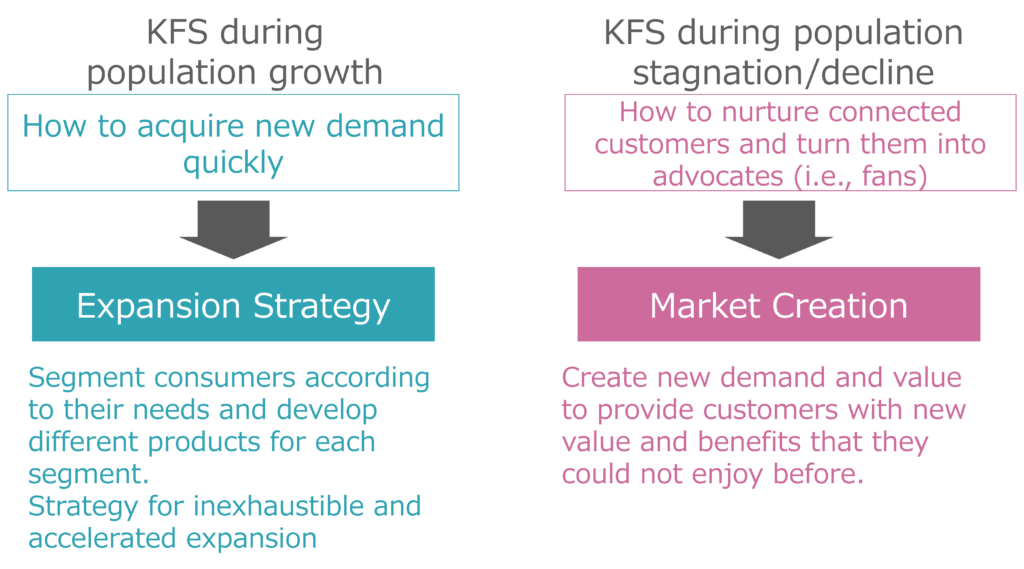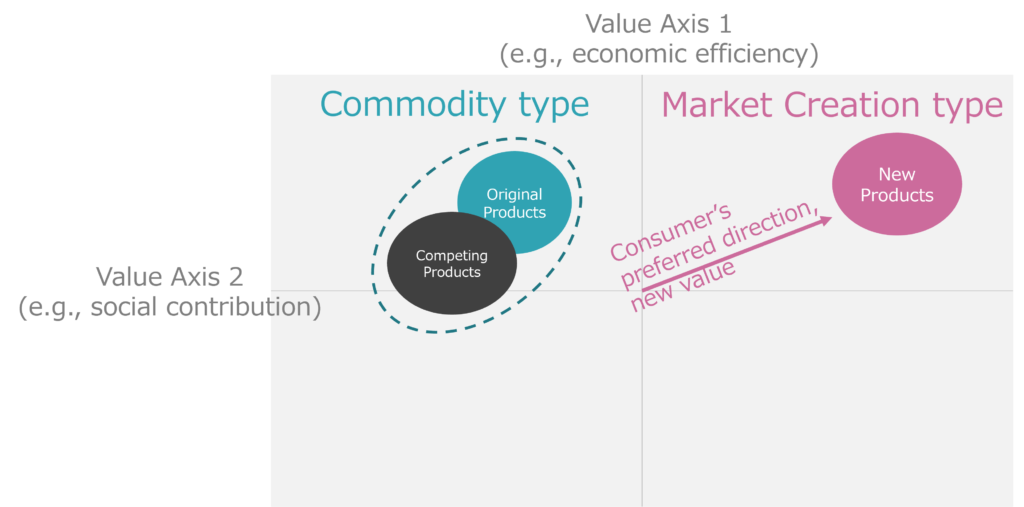As you are all aware, the marketing environment is changing at a dizzying pace. It has long been said that we are in an era of VUCA, where the future is difficult to predict, and the Corona disaster has made it even more difficult to foresee how sustainable growth can be achieved. In this series, we would like to explain how companies should respond to this situation, which has never been experienced by mankind before, from three perspectives.
The first issue is “Market Strategy”.
Expect typologies of business transformation and value creation
 With the recent changes in the marketing environment, various proposals have been made around the world. At the Marketing Summit, a worldwide online international conference held this past November in 2022, Kotler raised the topic of Entrepreneurial Marketing. We will continue to discuss Entrepreneurial Marketing from time to time in this series.
With the recent changes in the marketing environment, various proposals have been made around the world. At the Marketing Summit, a worldwide online international conference held this past November in 2022, Kotler raised the topic of Entrepreneurial Marketing. We will continue to discuss Entrepreneurial Marketing from time to time in this series.
Now, when considering marketing, there are three basic perspectives: the market, the brand, and the customer. The perspective of the market that we will discuss in this article can be defined as a product strategy. As we have communicated in commentary articles and numerous seminars, populations around the world are becoming stagnant and declining. Furthermore, the rapid growth of DX and the issue of sustainability has become a strong concern. How should we think about product strategy in these times?
In the past, product strategies have been conducted primarily by subdividing large markets into smaller segments. From a large market, we have segmented consumers according to their needs and developed different products for each segment to increase our product lineup. This was an effective strategy because as the market pie gets bigger, each segment gets bigger at the same time. However, in an era when the population is moving from stagnation to contraction and people are becoming more conscious of sustainability, it is becoming increasingly difficult to adopt such a strategy of inexhaustible and accelerated expansion.
Future market strategies will require the creation of new demand and value and the provision of new value and benefits to customers that they have not been able to enjoy before. The key strategic decision will be whether the product or business will compete in a commodity-like manner within the existing market or offer new value.

To see if this is being done properly, we must look at consumers’ perceptions. If a product offers a new value in consumers’ perception, it should respond with a different factor than before. Or benefits not seen before may show up as a result of the analysis. If we analyze the perception of a new product and it is positioned in the same way as before, not much different from the original product or competing products, we have to say that this is a commodity-type product.

To firmly adapt to new trends in future market strategies, it is more important than ever to objectively grasp consumers’ perceptions and determine whether or not they are linked to loyalty.

